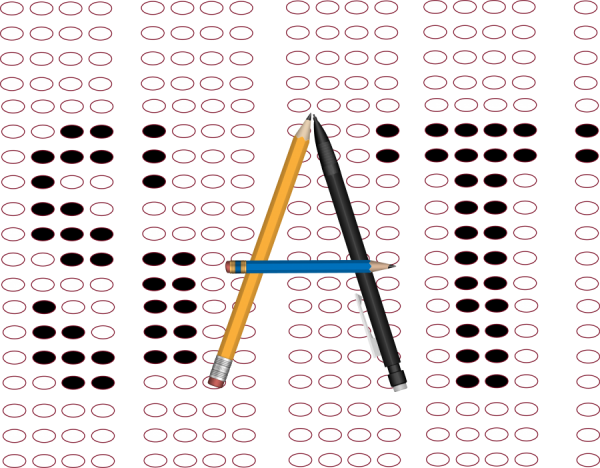The basic SAT exam evaluates student knowledge in reading, writing and math.
Record numbers of students graduating in 2012 took the SATs, but scores dramatically decreased in two of the three required exam sections. The obvious downside of SAT testing includes the price of the exam that discourages low-income students from taking it. But, the standardized evaluation has other advantages and disadvantages for universities, secondary schools and students preparing to go to college.
Admission and Scholarship Standards
Colleges find advantages in SAT exams and use the scores as part of admissions standards. The exam scores are also asked by the Scholarship committees to award education funds. Scores determine the overall quality of the applicant, according to these groups, and they link the numbers to the probability of success in college. The National Association for College Admission Counseling in 2011 found colleges admit students based on grades in college prep courses, strength of the curriculum in the courses taken by the student and standardized admission test scores, in that order.
Evaluation Tool
In addition to the basic exams, the SAT agency offers students the option of taking subject-area tests in history, mathematics, science, literature and a number of foreign languages, including Chinese, French, Italian, Japanese and Latin. The content-area exams, along with the regular SAT, give students and parents a chance to assess personal skills to determine the amount of review necessary to do well in college. High scores on exams show college admission officers that the student has mastery of subject areas not offered at the student’s school. Districts and individual schools also use test scores to evaluate departments and programs and improve the curriculum to help district students score higher on the exams. The College Board, administrators of the SAT and subject area tests, claim approximately 500,000 students each year take the special content exams.
Preparation Concerns
Secondary students retake SATs to improve scores. They frequently enroll in extensive professional preparation courses to practice the questions asked on the exam. This preparation defeats the purpose of an exam to show the student’s scope of knowledge for college work. Students repeating answers fail to reflect a mastery of the subject area. Preparation courses also discriminate against students without money to pay for the targeted tutoring. This makes high test scores due to preparation an option only for the wealthy, according to researcher Claudia Buchmann, an associate professor of sociology at Ohio State University.
Learning-Style Issues
Standardized exams, including the SAT, ask questions that favor some learning styles over others, and this leaves groups of test takers at a disadvantage compared with others. “Learning style” is a term to describe the way people prefer to learn or demonstrate knowledge. Auditory and visual learners, people who learn best by reading or listening to information, perform better on exams that incorporate questions involving reading and writing. When compared with learners who perform best by demonstrating knowledge through physical action or activity, this group of learners has advantages when taking the SAT exam .

